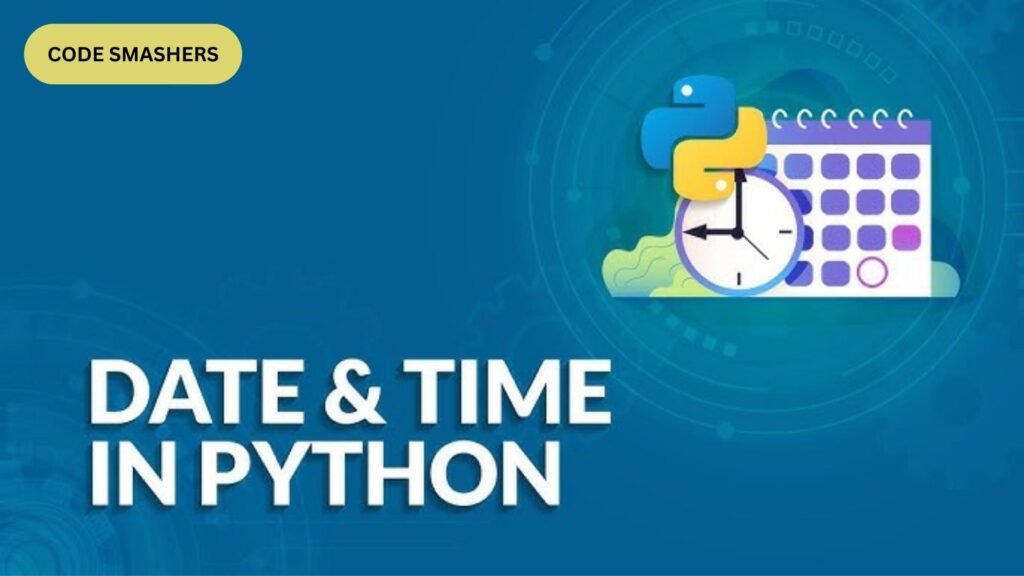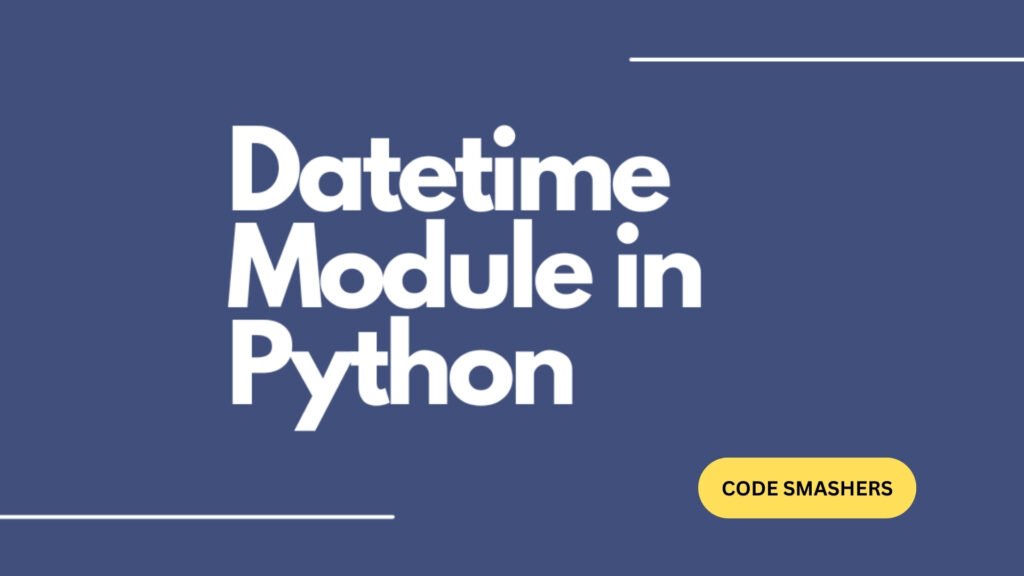Introduction
In the world of programming, handling date and time is essential. Whether you’re developing a web application, analyzing data, or automating tasks, manipulating date and time accurately is crucial. Python offers robust capabilities for this through its `datetime` module, making it a favorite among developers.
In this guide, we’ll explore the nuances of working with date and time in Python. You’ll learn about the powerful `datetime` module, practical examples of time manipulation, best practices to avoid common mistakes and real-world applications. By the end, you’ll be well-equipped to handle any date and time challenges in your projects.

Understanding the Importance of Date and Time Management
Why Date and Time Matter in Programming
Date and time manipulation is pivotal in various programming tasks. From logging events and scheduling tasks to timestamping and calculating durations, accurate handling of date and time ensures your programs of Python to run smoothly and produce reliable results.
The Importance of Time Management
The ability to manage one’s time well is essential in both personal and professional contexts. It enables individuals to optimize their productivity by prioritizing tasks, setting goals, and efficiently allocating their time. Good time management leads to greater output, improved decision-making, and reduced stress, as it allows individuals to work more efficiently and effectively manage their responsibilities. In a professional context, proper time management enhances team collaboration, meets deadlines, and contributes to a more harmonious work environment. On a personal level, it ensures a balanced lifestyle, allowing room for relaxation and activities that promote well-being. Mastering time management skills can ultimately lead to greater success and fulfillment across various aspects of life.
Common Scenarios Requiring Python Date and Time Manipulation
Consider scenarios such as:
- Calculating age from a birthdate
- Converting timestamps between time zones
- Scheduling recurring events
- Analyzing time-series data
The Challenges of Date and Time Manipulation
Handling date and time can be tricky due to:
- Different date formats
- Leap years
- Daylight Saving Time (DST)
- Time zone differences

Overview of the Datetime Module in Python
Introducing the Datetime Module
Python’s `datetime` module provides classes for manipulating dates and times. It is part of the standard library, making it readily available without the need for additional installations.
Basic Usage of the Datetime Module
Here’s how you can use the `datetime` module to get the current date and time:
import datetime
now = datetime.datetime.now()
print(“Current date and time:”, now)
Key Features of the Datetime Module
The `datetime` module offers various features:
- `datetime`: Combines date and time
- `date`: Handles dates only
- `time`: Handles time only
- `timedelta`: Represents differences between dates or times
Practical Examples of Time Manipulation
Adding and Subtracting Time
You can manipulate time using `timedelta` objects.
Adding 10 days to the current date
from datetime import datetime, timedelta
now = datetime.now()
future_date = now + timedelta(days=10)
print(“Date after 10 days:”, future_date)
Subtracting 5 hours from the current time
past_time = now – timedelta(hours=5)
print(“Time 5 hours ago:”, past_time)
Converting Between Time Zones
Handling time zones accurately requires the `pytz` library.

Converting UTC to a different time zone
from datetime import datetime
import pytz
utc_time = datetime.utcnow().replace(tzinfo=pytz.UTC)
local_time = utc_time.astimezone(pytz.timezone(‘US/Pacific’))
print(“Pacific Time:”, local_time)
Formatting Dates and Times
Use the `strftime` method for formatting.
Formatting the current date and time
formatted_date = now.strftime(“%Y-%m-%d %H:%M:%S”)
print(“Formatted date and time:”, formatted_date)
Parsing Strings to Datetime
The `strptime` method parses a string into a `datetime` object.
Parsing a date string
date_string = “2023-10-15 08:30:00”
parsed_date = datetime.strptime(date_string, “%Y-%m-%d %H:%M:%S”)
print(“Parsed date:”, parsed_date)
Best Practices for Working with Date and Time in Python
Using Try-Except Blocks
Handle errors gracefully by wrapping date operations in try-except blocks.
Example
try:
invalid_date = datetime.strptime(“2023-13-01”, “%Y-%m-%d”)
except ValueError as e:
print(“Error parsing date:”, e)
Centralizing Date and Time Formatting
Maintain consistency by centralizing date and time formatting.
Create a function for consistent formatting
def format_date(date):
return date.strftime(“%Y-%m-%d %H:%M:%S”)
print(“Formatted date:”, format_date(now))
Leveraging Libraries for Complex Operations
Use libraries like `pytz` and `dateutil` for advanced date and time manipulation.
Example using dateutil for parsing
from dateutil import parser
date = parser.parse(“October 15, 2023, 08:30 AM”)
print(“Parsed date using dateutil:”, date)

Real-World Applications and Case Studies
Data Analysis
For data analysis, calculating time differences between events is common.
Example of calculating time difference
event_start = datetime(2023, 10, 1, 9, 0)
event_end = datetime(2023, 10, 1, 17, 0)
duration = event_end – event_start
print(“Event duration:”, duration)
Web Development
In web development, displaying times in the user’s local time zone enhances user experience.
Example using Flask to display local time
from flask import Flask, request
from datetime import datetime
import pytz
app = Flask(name)
@app.route(“/time”)
def display_time():
user_time_zone = request.args.get(‘timezone’, ‘UTC’)
user_time = datetime.now(pytz.timezone(user_time_zone))
return Current time in {user_time_zone}: {user_time.strftime(‘%Y-%m-%d %H:%M:%S’)}”
if name == “main“:
app.run()
Automation
Automating tasks based on date and time is another practical use case.
Example of scheduling a task
import schedule
import time
def job():
print(“Task executed at”, datetime.now())
schedule.every().day.at(“10:30”).do(job)
while True:
schedule.run_pending()
time.sleep(1)
Conclusion
Mastering date and time manipulation in Python opens up a world of possibilities. From ensuring accurate time zone conversions to automating tasks based on specific dates, the `datetime` module and related libraries provide powerful tools to enhance your projects.
Start applying these techniques in your code, and you’ll soon see the benefits. Whether you’re a seasoned developer or just getting started, handling date and time effectively will significantly improve your programming skills.
Ready to deepen your knowledge further? Continue exploring Python’s capabilities and leverage these skills to build more robust and efficient applications.
